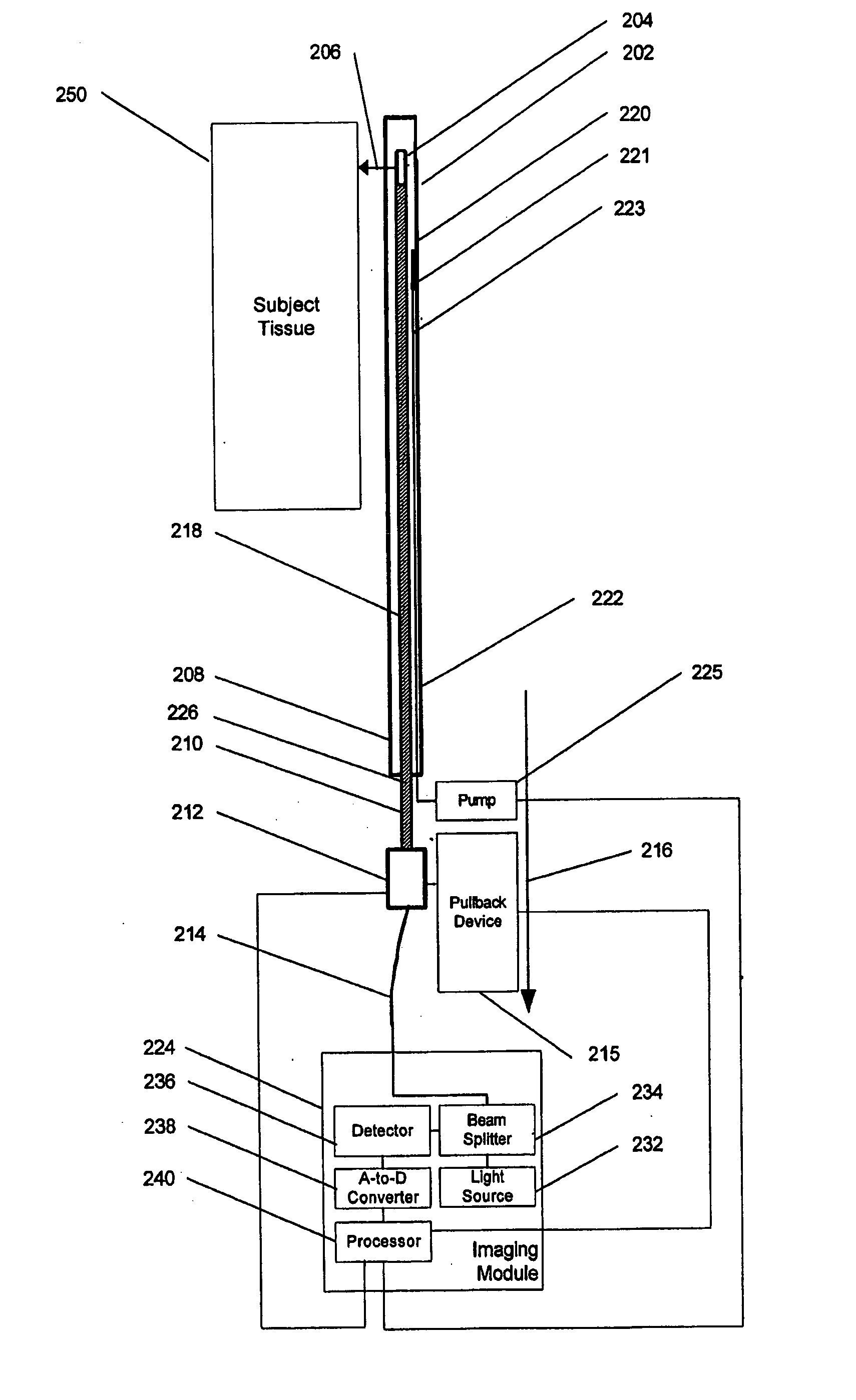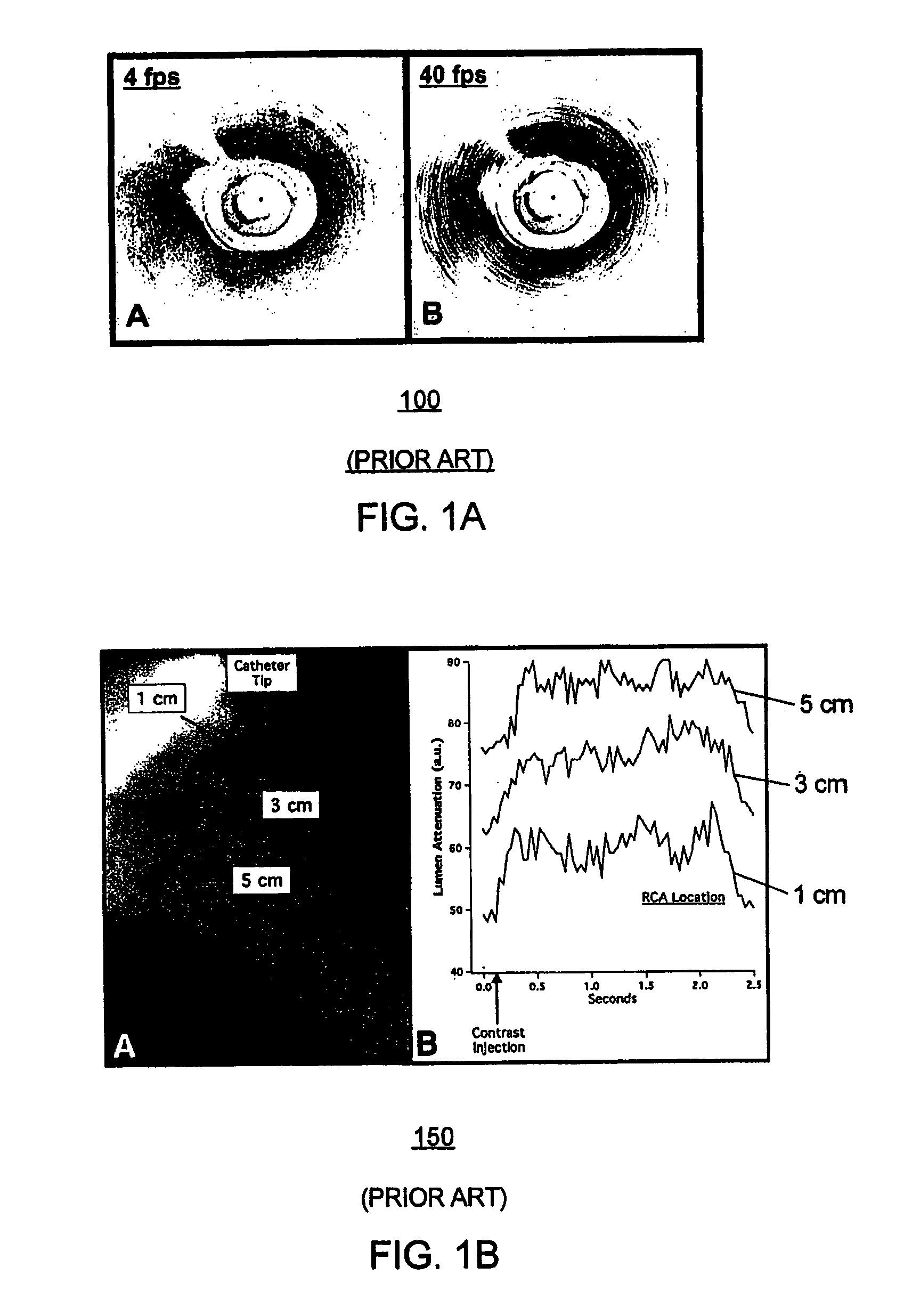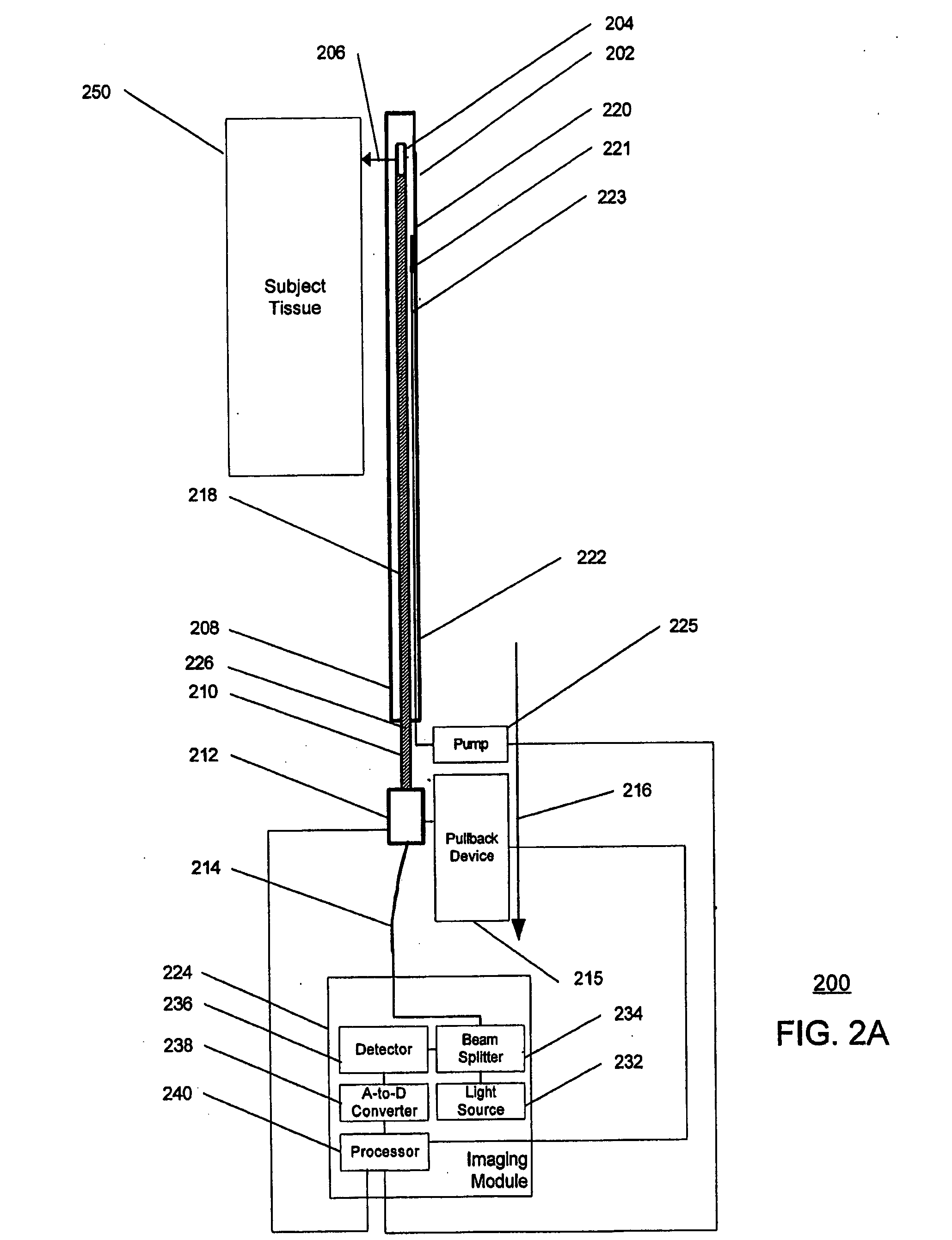Method and apparatus for imaging of vessel segments
a technology of vessel segments and imaging methods, applied in the field of method and apparatus for imaging of vessel segments, can solve the problems of limiting the ability of patients to quantify the risk, no method other than optical coherence tomography, and no reliable identification of microscopic features that characterize vulnerable plaques. the effect of diagnosis, treatment and prevention
- Summary
- Abstract
- Description
- Claims
- Application Information
AI Technical Summary
Benefits of technology
Problems solved by technology
Method used
Image
Examples
Embodiment Construction
[0033]FIGS. 2A, 2B, 4, 5 and 6 illustrate various exemplary embodiments of an apparatus for obtaining an image of internal surfaces of a segment of an anatomic structure and FIG. 3 shows an exemplary embodiment of a method to implant the same. Generally, the exemplary method and apparatus according to the present invention perform a helical scan of the internal surfaces of the segment of the anatomic structure after injecting a bolus of transparent or semi-transparent fluid, so as to obtain an image of the internal surfaces of the segment of the anatomic structure using an imaging modality. Such technique combines the efficacy of the imaging modality and the process of injecting a bolus of transparent or semi-transparent fluid with the beneficial effect of imaging an entire segment of the anatomic structure. The exemplary embodiments of the method and apparatus according to the present invention utilize a further paradigm for imaging that provide a significant increase in the image ...
PUM
 Login to View More
Login to View More Abstract
Description
Claims
Application Information
 Login to View More
Login to View More - R&D
- Intellectual Property
- Life Sciences
- Materials
- Tech Scout
- Unparalleled Data Quality
- Higher Quality Content
- 60% Fewer Hallucinations
Browse by: Latest US Patents, China's latest patents, Technical Efficacy Thesaurus, Application Domain, Technology Topic, Popular Technical Reports.
© 2025 PatSnap. All rights reserved.Legal|Privacy policy|Modern Slavery Act Transparency Statement|Sitemap|About US| Contact US: help@patsnap.com



